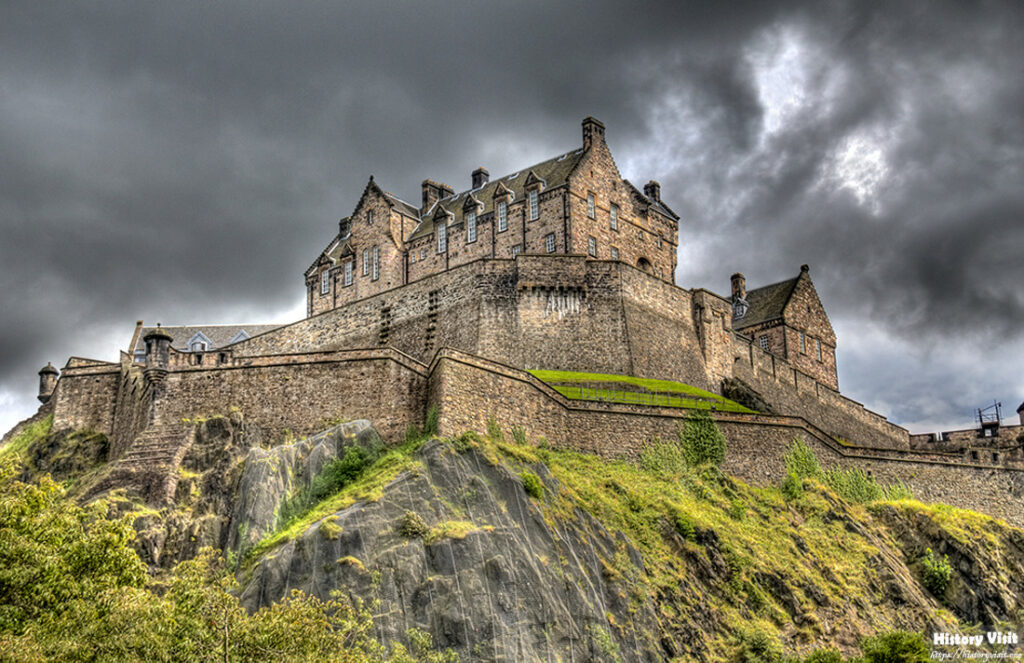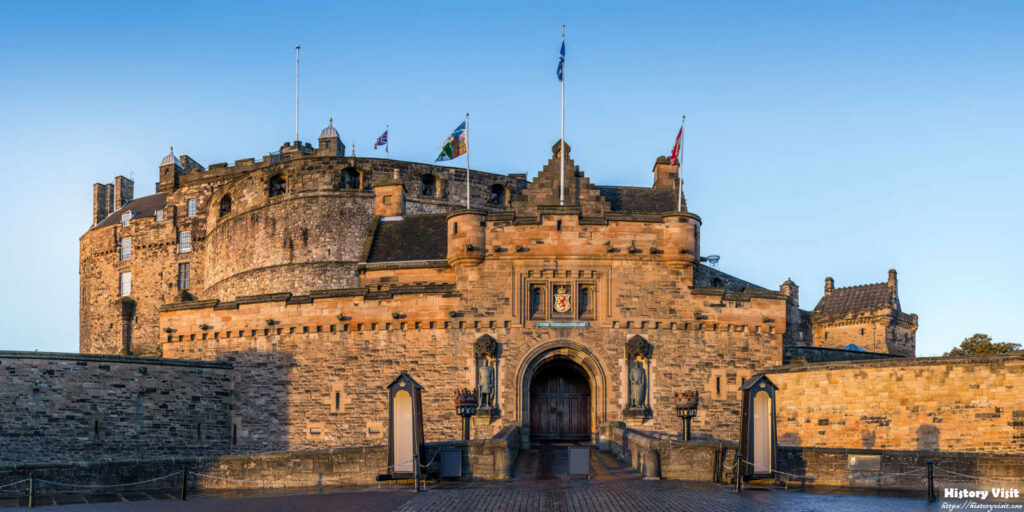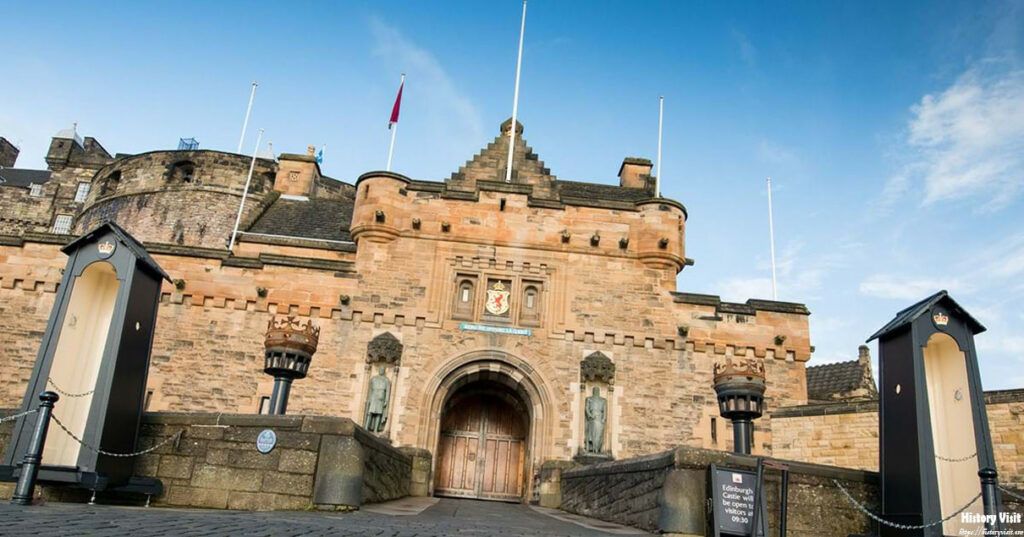Edinburgh Castle: A Testament to Scotland’s Rich History

Introduction:
Perched majestically atop Castle Rock, Edinburgh Castle stands as an iconic symbol of Scotland’s rich heritage and turbulent history. This ancient fortress has witnessed centuries of intrigue, conquest, and royal splendor, earning its place as one of the most iconic landmarks in Scotland.
History and Construction:
Edinburgh Castle’s origins can be traced back to the 12th century when King David I of Scotland ordered its construction as a stronghold to defend against invading forces. Built on a volcanic rock formation, the castle’s strategic location provided unparalleled defensive advantages, dominating the surrounding landscape and serving as a symbol of royal power and authority.
The castle’s construction involved a combination of manual labor and skilled craftsmanship. Stonemasons and laborers worked tirelessly to quarry and transport the massive stones needed to build the fortress walls, towers, and other structures. The castle’s defenses were further strengthened with the addition of a series of gates, drawbridges, and battlements, making it virtually impregnable to enemy attacks.
Over the centuries, Edinburgh Castle underwent numerous expansions and renovations, each adding to its grandeur and fortification. The castle’s distinctive architectural features, including its formidable walls, imposing towers, and strategic positioning, reflect the military prowess and engineering ingenuity of its builders.
Architectural Beauty:

The architectural beauty of Edinburgh Castle lies in its harmonious blend of medieval fortifications and elegant Renaissance structures. The castle’s Great Hall, constructed in the 15th century, showcases magnificent Gothic architecture with its soaring ceilings, intricate carvings, and grand windows.
Another architectural gem within the castle is the Crown Room, where the Honours of Scotland, including the crown, scepter, and sword of state, are proudly displayed. The room’s vaulted ceilings and ornate decorations offer a glimpse into Scotland’s royal heritage and regal splendor.
In addition to its defensive features and ceremonial halls, Edinburgh Castle boasts a variety of architectural elements that serve both practical and aesthetic purposes. The castle’s courtyards, gardens, and residential quarters provide insight into daily life within its walls, while its strategic placement atop Castle Rock offers panoramic views of the surrounding countryside.
Royal Residences:
Throughout its history, Edinburgh Castle has been home to many Scottish monarchs and served as the seat of royal power. From the reign of King Malcolm III to the present day, the castle has witnessed the comings and goings of kings, queens, and nobles, each leaving their mark on its storied halls.
One of the most notable royals to reside in Edinburgh Castle was Mary, Queen of Scots, who sought refuge within its walls during times of political upheaval. Her presence imbued the castle with an aura of romance and tragedy, as she grappled with the complexities of power and betrayal.
In addition to serving as a royal residence, Edinburgh Castle played a central role in Scotland’s political and military affairs. It served as a symbol of authority and a base of operations for kings and generals during times of war, while also hosting important state functions and ceremonies.
Hidden Stories and Tales:
Beneath the surface of Edinburgh Castle lie countless tales of intrigue, mystery, and legend. From ghostly apparitions haunting its dark corridors to tales of daring escapes and clandestine meetings, the castle’s history is steeped in folklore and myth.
One of the most enduring legends surrounding Edinburgh Castle is that of the One O’clock Gun, a tradition dating back to the 19th century. Every day, except Sundays, a cannon is fired from the castle ramparts precisely at 1 o’clock, a practice originally intended to provide sailors with an accurate time signal.
In addition to its legends and lore, Edinburgh Castle has also played a role in shaping the course of Scottish history. It has been the site of key events such as the signing of the Declaration of Arbroath in 1320, which asserted Scotland’s independence from English rule, and the imprisonment of key political figures during times of conflict and upheaval.
Importance and Valuability:

Edinburgh Castle holds immense importance as a symbol of Scotland’s national identity and cultural heritage. Its strategic significance in defending the kingdom against external threats cannot be overstated, while its role as a royal residence and seat of government has shaped the course of Scottish history.
Furthermore, Edinburgh Castle’s status as a UNESCO World Heritage Site underscores its global significance and enduring value as a cultural treasure. Visitors from around the world flock to marvel at its architectural splendor, explore its rich history, and experience the magic of Scotland’s past.
The castle’s historical and cultural significance extends beyond its architectural beauty and military prowess. It serves as a tangible link to Scotland’s past, connecting visitors with the traditions, customs, and values that have shaped the nation’s identity over the centuries.
Conclusion:
In conclusion, Edinburgh Castle stands as a testament to Scotland’s storied past and enduring resilience. From its humble beginnings as a medieval fortress to its current status as a beloved tourist attraction, the castle continues to captivate imaginations and inspire awe. Its architectural beauty, royal connections, and hidden tales make it a cherished symbol of Scotland’s rich heritage and cultural legacy, ensuring its place as a timeless icon for generations to come.



qvt48n
w0bdhh
zod08a
Great article on tournament strategy-really highlights the importance of adaptability at the table. It’s no wonder sites like thrive by offering immersive, high-stakes experiences that challenge even seasoned players.